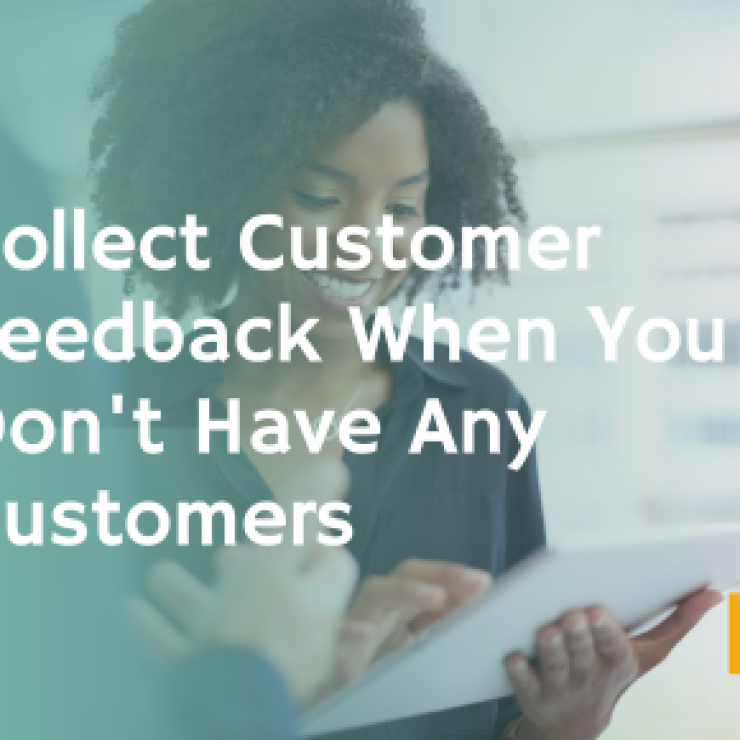In an increasingly customer-centric business environment, customer feedback holds the key to enhanced customer experience, improved product offerings, and better customer retention.
However, garnering effective insights hinges on asking the right questions. This comprehensive guide will walk you through 28 essential customer feedback questions, providing a significant edge to your customer surveys.
The Significance of Asking the Right Questions in Customer Surveys
The potency of customer surveys lies in the art of asking the right questions. The aim is to delve into your customers’ perceptions, experiences, and preferences, and the only route to these insights is through well-crafted, thought-provoking questions.
A. The Power of Well-Crafted Questions in Yielding Accurate, Actionable Data
Well-crafted questions play a pivotal role in data accuracy and usability. They are tailored to avoid leading or confusing the respondent, thus ensuring unbiased, clear responses. They also directly align with the survey’s purpose and goals.
This precision in question design not only maintains the survey’s focus but also guarantees the data’s relevance, rendering it highly actionable.
For instance, a vague question like “Do you like our products?” might result in equally vague and varied answers. However, a more specific question such as “How would you rate the quality of our product X on a scale of 1 to 10?” provides quantifiable data that can be statistically analyzed and interpreted. Similarly, “What improvements would you suggest for product X?” is an open-ended question that invites detailed, potentially action-worthy insights.
B. The Impact of Customer Feedback on Business Decisions
Customer feedback directly influences business decisions and strategic direction. From product development to marketing campaigns, customer service to pricing strategies, every facet of your business can benefit from the valuable insights that come from your customers’ feedback.
For instance, if customers frequently suggest enhancements to a particular feature of your product, this could be a strong indication to prioritize this in your product development roadmap.
Similarly, if your survey data suggests a high level of customer satisfaction with your customer service, you may choose to highlight this in your marketing campaigns.
Moreover, these insights can provide a better understanding of your customers’ needs and preferences, enabling you to personalize your offerings, improve customer retention, and increase customer loyalty.
After all, a business that listens to its customers and acts on their feedback is more likely to foster trust and build long-lasting customer relationships.
In conclusion, asking the right questions in your customer surveys not only leads to more accurate, actionable data but also serves as a powerful tool in shaping your business decisions and strategies.
Types of Customer Feedback Questions
In the world of customer surveys, the type of questions you ask can make a significant difference in the data you collect. Essentially, there are three primary types of questions you can ask – open-ended, close-ended, and scale/rating questions. Let’s delve into each type:
A. Open-ended Questions
Open-ended questions are those that cannot be answered with a simple “yes” or “no”. These questions are designed to encourage a full, meaningful answer using the respondent’s own knowledge and feelings. They’re called “open-ended” because the respondent is free to respond with any answer they choose.
For example, you might ask your customer:
- “What do you like most about our product or service?”
- “How can we improve your experience with our product or service?”
- “Could you describe any challenges you encountered while using our product or service?”
These questions allow customers to express their thoughts and feelings in a way that’s comfortable and comprehensive for them. This type of question can provide deep insights, but can be more time-consuming to analyze because the responses are unique and less structured.
B. Close-ended Questions
Close-ended questions are the opposite of open-ended questions. They are designed to receive a specific, limited-range response. This could be a “yes” or “no” answer, choosing from a list of provided options, or a numerical rating.
Examples of close-ended questions might include:
- “Did you find our product or service useful? (Yes/No)”
- “Which of our services do you use the most? (Service A / Service B / Service C)”
- “Have you purchased from us before? (Yes/No)”
These questions are easier and quicker to analyze since they provide structured data. However, they might not provide the full picture or deeper insights that open-ended questions could provide.
C. Scale/Rating Questions
Scale or rating questions fall somewhere between open and close-ended questions. They allow respondents to answer on a scale of numbers or descriptors, which can provide a quantifiable measure of a subjective experience.
These might look something like:
- “On a scale of 1-10, how would you rate your overall experience with our company?”
- “How likely are you to recommend our product to a friend? (1 being not likely at all, 10 being extremely likely)”
- “How would you rate the quality of our customer service? (Poor / Fair / Good / Excellent)”
Scale/rating questions provide quantifiable data and give customers a chance to express degrees of feeling or experience, which can provide more nuance than a simple “yes” or “no”.
By using a blend of these three types of questions, you can gather diverse customer feedback that provides both in-depth insights and easy-to-analyze data.
28 Essential Customer Feedback Questions
Crafting insightful customer feedback questions can dramatically enhance the quality of data you gather. Here, we’ll explore a variety of specific questions under five main categories:
A. Product/Service Evaluation Questions
Product/service evaluation questions help you understand how your customers perceive your offerings. Here are a few specific examples:
- Questions About the Product/Service Quality
- “How would you rate the quality of our product/service on a scale from 1 to 10?”
- “Do you believe our product/service quality has improved, worsened, or remained the same over time?”
- Questions About Product/Service Functionality
- “Are there any features of our product/service you find difficult to use?”
- “What features of our product/service do you find most beneficial?”
B. Customer Satisfaction Questions
Customer satisfaction questions aim to gauge how happy customers are with your products or services:
- Questions About Overall Satisfaction
- “On a scale of 1 to 10, how satisfied are you with our product/service?”
- “What would it take for us to improve your satisfaction rating?”
- Questions About Customer Experience
- “How would you describe your most recent interaction with our company?”
- “Were you able to find what you needed easily on our website?”
C. Customer Loyalty Questions
Customer loyalty questions measure how likely your customers are to continue using your product or service, and to recommend it to others:
- Questions About Customer Retention
- “How likely are you to continue using our product/service in the future?”
- “Do you plan to buy more from us in the next year?”
- Questions About Customer Advocacy
- “How likely are you to recommend our product/service to a friend or colleague?”
- “What made you choose our product/service over our competitors?”
D. Company Performance Questions
Company performance questions help you evaluate how well your company is doing in terms of customer service, pricing, etc:
- Questions About the Company’s Customer Service
- “How would you rate the quality of our customer service?”
- “Was our customer service team able to resolve your issue effectively?”
- Questions About the Company’s Pricing
- “Do you find our pricing fair for the value you receive?”
- “How does our pricing compare to our competitors?”
E. Improvement Suggestion Questions
Improvement suggestion questions invite customers to share their ideas on how you can improve:
- Questions About Areas of Improvement
- “What is one thing you wish we did differently?”
- “What can we do to enhance your experience with our product/service?”
- Questions About Potential New Features or Services
- “Are there any features you’d like us to add to our product in the future?”
- “What new services would you like us to offer?”
These are just a few examples of the types of questions you can ask. Remember, the key is to ask questions that provide valuable insights while also respecting your customers’ time.
Implementing Customer Feedback: Turning Data into Action
Once you’ve gathered your customer feedback through the thoughtfully crafted survey, the real work begins: translating that feedback into actionable steps to improve your business.
A. Analyzing the Data
To start, you’ll need to thoroughly analyze the data. You might categorize open-ended responses into themes, calculate average ratings, or graph responses to visualize trends. Tools like spreadsheet software, data visualization tools, or more advanced data analysis platforms can be helpful here.
For example, if you asked, “How likely are you to recommend our product to a friend?”, you could graph the responses to see a visual representation of your customer advocacy.
B. Developing an Action Plan
Based on your analysis, you can create a plan to address the feedback. For example, if many customers are suggesting the same improvement, that item could be a priority. Similarly, areas where customers are highly satisfied might be areas to maintain or even highlight in your marketing.
For instance, if you find through your survey that customers appreciate your customer service but believe your website could be more user-friendly, you might prioritize a website redesign while also considering how to further enhance your recognized strength in customer service.
C. Communicating Changes to Customers
Finally, it’s essential to communicate back to your customers that their feedback has been heard and is valued. You might email survey respondents to thank them for their feedback, inform them about changes you’re making based on their feedback, or even ask follow-up questions.
For example, if you’re making changes to your website based on feedback, you might send an email saying, “We heard your feedback and are improving our website to serve you better.”
Best Practices for Effective Customer Surveys
To get the most from your customer surveys, consider these best practices:
A. Make it Easy for Customers
Ensure your survey is quick and easy to complete. This might mean limiting the number of questions, using a clear and easy-to-read design, or even offering a mobile-friendly version.
B. Provide Incentives
Consider providing an incentive for customers to complete your survey, such as a discount code or entry into a prize drawing. This can increase response rates and show customers that you value their time and feedback.
C. Follow Up
Don’t forget to follow up after the survey is complete, either by thanking customers for their time, sharing results, or letting them know about changes you’re making based on their feedback.
Conclusion
Customer feedback is a gold mine of information that can help improve your products, enhance your services, and build stronger relationships with your customers.
The key is to ask the right questions, analyze the feedback effectively, and turn the insights into action. With these 28 essential customer feedback questions and best practices, you’ll be well on your way to a more customer-centric business.




